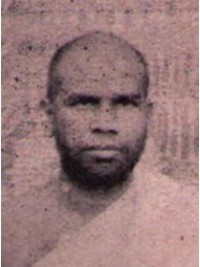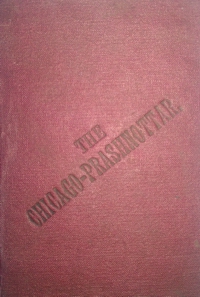80. Question:
What power does the soul of human being possess to get a high position?
Answer:
The high positions are two, one secular and the other spiritual. The secular position are such as of Indra, Chakravarti, Vasudeva, Baldeva, Mandlik Raja etc. The doing of the aforesaid 35 things enable one to attain this position.
The powers in soul to attain the spiritual position viz. that of God, are the ways in which a recluse should lead his life.
81. Question:
What are such acts of Dharma as are beyond controversy?
Answer:
No believer doubts in the goodness of such things as showing mercy towards living beings, truth speaking, non-stealing, abstinence from adultery, forgiving, charitable temper, kind heartedness, contentment, doing good to other etc.
82. Question:
Is it essential to study the sacred books of different religions?
Answer:
The reason why it is necessary to study the sacred books of different religions is that one v&ho does so impartially and without any prejudice would find out the real truth.
83. Question:
What are the rules and conditions governing such a study?
Answer:
Before you study a sacred book, you must see that its author is free from 18 faults, that there are no contradictions in his statements, that whatever he says is not contrary to what is visible in the world by direct proof and that it stands the three tests.
You must believe in all the contents of the book which like gold stands these tests. The tests are these. 1st rub the gold over Kasauti (test - stone), 2nd by examining it by boring it and 3rd by making it red hot in fire. The price of gold which stands these three tests is fit to be accepted. Similarly the sacred book which prohibits the doing of all sinful acts and dictates the ways of acting upon what is contrary to sinful acts i. e. a book which for the purpose of liberation prohibits the doing of sinful acts and dictates the way of acting upon what is contrary to them is called by Tirthankar Bhagwan a Kask Shudha Shastra. Thus a book which for the purpose of mukti dictates observance of meditation, study, mercy, truth shil (chastity, morality, good conduct), contentment etc., all combined and prohibits doing injury to living being, speaking false hood, committing theft, keeping wife, having possessions, anger, arrogance, Māyā (illusion), avarice, etc., is a Kash shudha Shāstra. The Shāstra which deals with arth (wealth), kām (passion) combined, and is full of stories and shows the ways to mohshha in a secondary way is not kash shudha shāstra. The shāstra which deals with all the constructive and destructive methods of worship and conduct is called a chheda shudha shāstra. A saint should take care of the living beings even when he answers the calls of nature. It is most proper to take care of living beings in doing every dhārmic act.
The shāstra which prohibits the doing) f an act for one purpose and dictates it’s doing for another purpose cannot be called chhed (shudhi-shāstra). For instance the Vedas which when dealing with the question of liberation prohibits injury to living beings and when dealing with the question of worldly possession sanction such an injury. The shāstra which is tested by the fire of the real qualities of things as described and tested from all the points of views and is found to be free from the blfick spots of superstition is called a tap shuddhi shāstra. The shāstra which describes the attributes of things from a single point of view, is not called tāp shuddhi shāstra. The aforesaid tests relate to the shāstras. It is also a necessary condition that the author of the true shāstra must be faultless and omniscient.
84. Question:
What traditions are there on the subject and what is their present form?
Answer:
Shuk alias Parivrājak, son of Vyāsaji, ascertained the real truth from muni Thāvachchaputra, disciple of Lord Arisht-nemi and accepted the true dharmā. It is so described in Sri Gnātā Sutra. The Niravalika Sutra says that Somal Brahman learned 14 sciences (4 Vedas, 6 āngas, dharma mimānsā, Tarka or Māyā, and the Purāna) and after enquiries accepted the householder's duties grahasth dharma. The Bhagavati Sūtra says that Somal Brahman learned 14 sciences and after enquiring about the elements accepted the Jaina religion. Shayyambhava Bhat, the author of the Dasha-Vaikālika Sūtra gave up Mimānsak religion and became the disciple of Muni Prabhava Swami. The following 11 Brahmans (1) Indra Bhuti, (2) Agni Bhati, (3) Vayu Bhuti, (4) Wyakt Swami, (5) Sudharmā, (6) Mandit Putra, (7) Maurya Putra, (8) Akampita, (9)Achal Bhrātā, (10) Metarya and (11) Prabhās along with the 4400 disciples - all learned in 14 sciences - ascertaining the truths, took Diksha (initiation) from the venerable Lord Mahāvira the 24th Tirthankara and became his disciples.
 Shrimat Vijyasandsuri
Shrimat Vijyasandsuri
